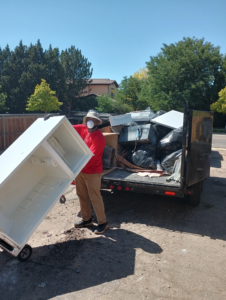Military Humvees, also known as HMMWVs, are an impressive vehicle. They’ve conquered mud, rocks, snow, and deserts. They’ve been dangled from CH-53s and hauled inside transport aircraft.
They’ve been the symbol of half a dozen US interventions, from the invasion to overthrow Panama’s Manuel Noriega to the Iraq war. But now they’re nearing the end of their service life, with Oshkosh winning a contract to replace them with JLTVs. Click Humvee For Sale to learn more.

As the military landscape changes, so must the equipment deployed on the battlefield. That’s why the Humvee has always been able to adapt to its environment. From improved armor protection to new technological capabilities, the Humvee has stayed relevant in various hostile environments since its inception.
The rise of Improvised Explosive Devices (IEDs) in Iraq and Afghanistan forced the military to up-armor existing vehicles, adding extra plating and ballistic glass as well as heavily protected gun turrets. However, these modifications added weight, affecting the vehicle’s mobility and susceptibility to rollovers. The new Reliability Extended Humvee (REH) addresses these issues by incorporating a redesigned chassis and axels as well as a re-engineered geared fan drive to reduce maintenance requirements and downtime.
Other improvements include upgraded electronic warfare capabilities and increased communication systems to facilitate real-time information sharing between different military branches for unified response coordination. In addition, a focus on sustainability and eco-friendly practices allows the Humvee to integrate new technologies that improve its environmental footprint.
In order to operate the Humvee effectively in the field, soldiers must go through comprehensive training programs that teach them about vehicle operation, maintenance, navigation, and tactical driving techniques for diverse terrains. These courses also cover a range of skills, including how to use the vehicle’s advanced communication systems.
HMMWVs are easy to operate and maintain, which saves both time and money for the mechanics who keep them in service. The vehicle has a modular design that allows it to be equipped with various armaments, weapons, and sensors. The vehicles also have a centralized power distribution system that makes it simple to plug in new equipment and upgrade old hardware. In addition, HMMWVs have a number of features that make them safe and comfortable to drive in the field, making them a great choice for military personnel.
Ballistic Protection
The Military Humvee is designed to protect the vehicle’s crew from a variety of threats including small arms fire, ballistics, and grenades. The armored vehicle also features a number of other systems that are designed to help the driver and passengers survive if the vehicle is ambushed or hit by enemy fire.
The HMMWV family of vehicles is able to be equipped with various armor kits that allow it to be up-armored and used for combat operations. The kits include various types of protective armor that are attached to the doors, windows and roof of the vehicle to increase the protection offered against a wide range of threats.
Several studies have been conducted to determine the effectiveness of armored vehicles in reducing the risk of penetration by projectiles. The most effective defenses against these projectiles are made from laminated composite materials. These materials have been constructed to withstand dynamic, bending and ballistic loads while minimizing their weight. One such material consists of a face-sheet and strike-face layer of hybrid carbon/aramid fiber-reinforced polymer, an intermediate plate of B4C ceramic and a backplate of 2024 aluminum metal matrix reinforced with MWCNTs.
These plates demonstrate ductility and plastic deformation in both impact and recovery phases, thereby reducing the chances of penetration. Moreover, the macroscopic images of the AC3 plates present good metallic texture and structural cohesion without CNT agglomeration, which further contributes to their enhanced mechanical and ballistic properties.
The results from the ballistic tests show that the laminated AC3 composite armor can significantly improve the survivability of the vehicle against large-caliber projectiles. This result is due to the fact that the front-face layer of the armor can absorb a large proportion of the kinetic energy of the target, while the strike-face and intermediate layers are able to splinter the projectile into a small fragment.
Off-Road Capabilities
Designed for military use, the Humvee is extremely durable and can be used in challenging environments without risk of damage or loss of functionality. The rugged frame and suspension system are made of high-strength steel and are designed to withstand heavy usage, making the Humvee one of the most versatile off-road vehicles available. The Humvee also features a strong payload capacity, meaning it can be equipped with additional cargo and equipment.
The vehicle’s four-wheel drive system and high ground clearance allow it to easily traverse rocky trails, ford streams, and climb steep hills. The M1097A2 Heavy Variant even includes a winch that can pull large loads, making it an ideal choice for towing or recovery missions.
Thanks to its robust design, the Humvee can also withstand extreme temperatures and harsh weather conditions, such as rain, snow, and high winds. Its components are also engineered to be long-lasting and able to withstand rigorous use, which helps cut maintenance costs for military personnel. Additionally, the Humvee’s modularity makes it easy to maintain and repair. In fact, all 15 configurations—cargo/troop carriers, weapons carriers, and ambulances—share the same chassis, powertrain, and transmission.
The Humvee is also a very efficient and effective vehicle, capable of traveling hundreds of miles on a single tank of fuel. In addition, it has a low profile and wide stance, making it a stable vehicle that is very difficult to roll over. The Humvee’s unique design also allows it to be carried by air and dropped from a helicopter, which is incredibly valuable in combat.
Street Legality
Military Humvees are incredibly powerful, impressive vehicles, but it’s important to understand the legal aspects and costs associated with their ownership. The best way to do this is to check with your local Department of Motor Vehicles to find out specific state laws regarding the mighty multipurpose military vehicle. It’d be a shame to spend all that money on one and then be told that you can’t drive it on the road.
As long as you’re not using a military Humvee to transport weapons and ammunition, it should be fine to use on the road. However, some states have restrictions on how high you can drive your HMMWV. To make sure you’re in compliance with state law, it’s a good idea to invest in a height-adjustable bumper for your Humvee. This way, you can drive on the road safely and without having to worry about a height-restricted sign.
Once you’ve made sure your Humvee is street-legal, the next step is to ensure that it has a valid vehicle title. This can be a difficult process depending on your state’s regulations. In order to get a valid title, you’ll need to complete an SF97 form or bill of sale and then submit it to your local DMV. This can be a time-consuming process, but it’s necessary to ensure that you’re legally driving your HMMWV on the road.
Buying a military Humvee can be an exciting and rewarding experience. These powerful and versatile vehicles can be used for a variety of purposes, from off-roading to emergency response. However, it’s important to consider the legal and maintenance costs associated with HMMWV ownership before making a purchase. By understanding these costs, you can be prepared for what to expect and avoid any surprises down the line.
Waterproof Engine
The HMMWV, as it is often referred to colloquially, may have become a macho affectation in popular culture but its original design was purely practical. The military-grade truck was designed as a jack-of-all-trades to replace a variety of tactical vehicles that were past their prime. These included the jeep, 2-ton M274 Mule and large six-wheel-drive 1-ton M561 Gama Goat trucks.
To maximize off-road capabilities and withstand the rigors of combat, the HMMWV was made to ride higher than most other trucks. This was accomplished by relocating the engine, brakes and driveline up into the vehicle’s body. This saved weight and also allowed the truck to be air dropped from planes into combat zones with ease.
During this process, AM General also made the Humvee waterproof. It is capable of driving underwater without a problem. This is especially helpful during missions where the crew may need to leave their vehicle to rescue people or to take on a mission.
These trucks are also capable of operating in mud and water. They can easily ford streams and rivers as well as climb up to a third of the way up the side of a mountain. They are built to be tough and they get the job done.
The HMMWV has various armour configurations. Some are even armed. Armour varies from having doors that weigh more than a heavyweight boxer to ones that are completely cloth in order to drastically reduce the weight of the vehicle. This allows them to be carried in a C-17 and dropped into combat areas with ease.







